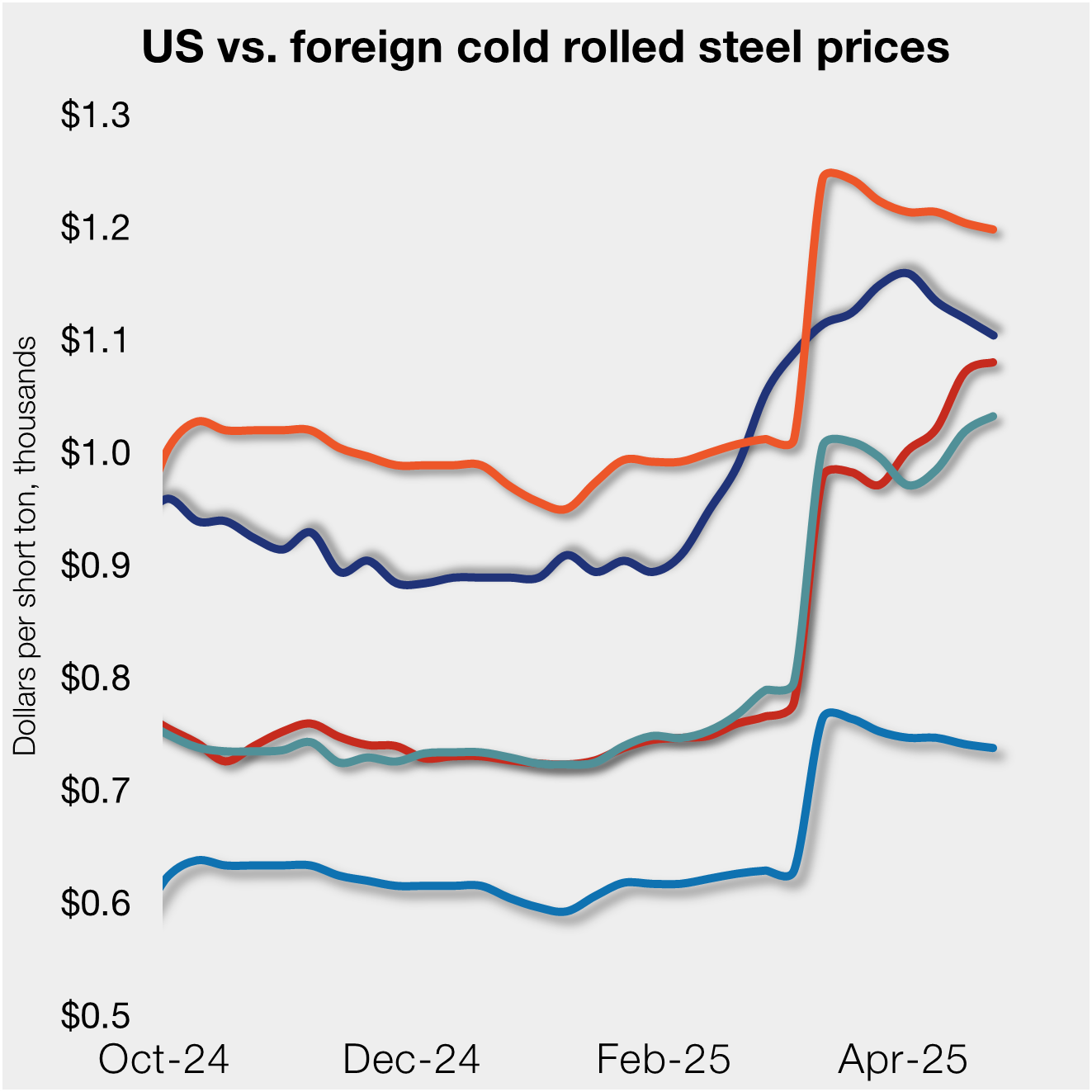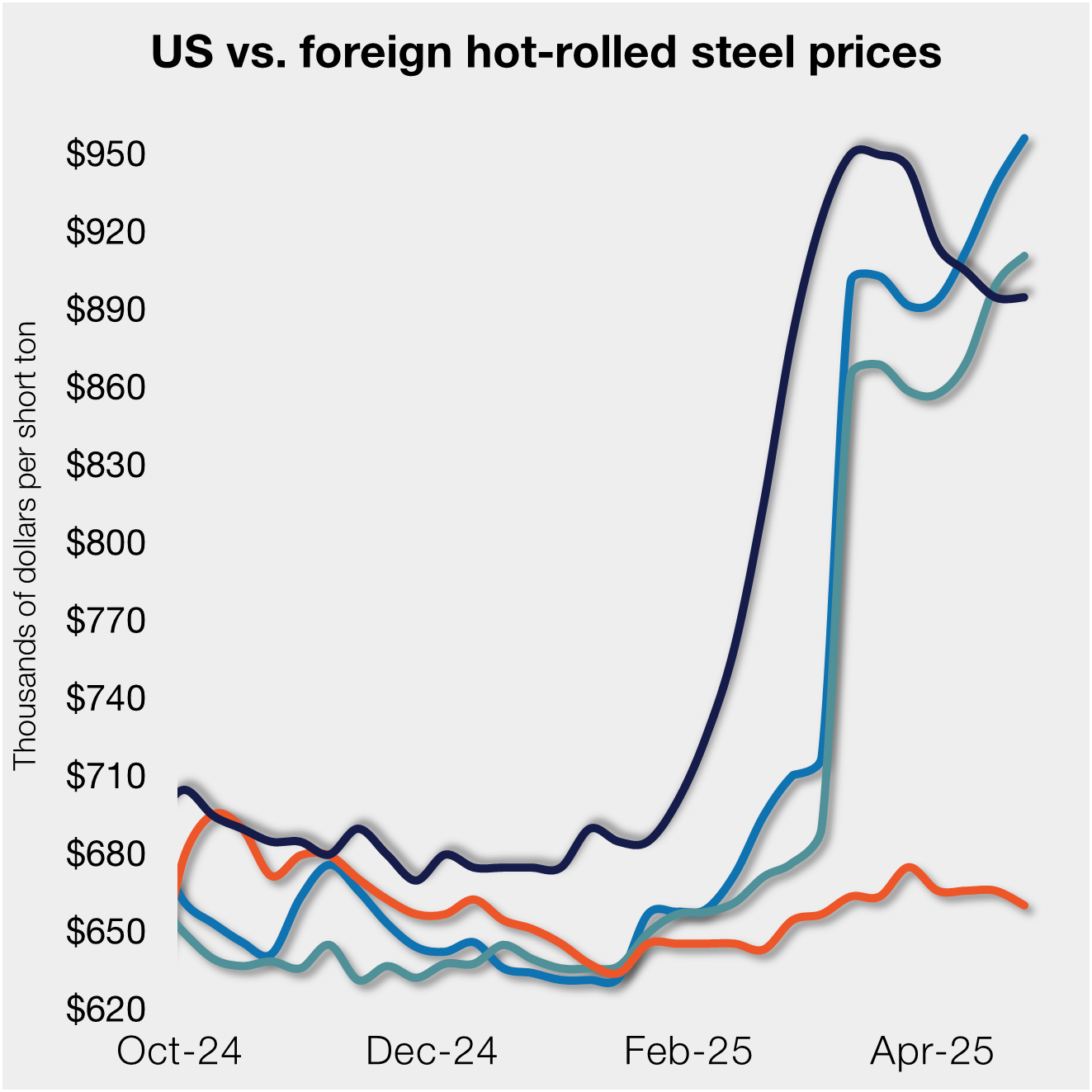Steel Products

Leibowitz on Trade: Movement on Steel and Aluminum Tariffs?
Written by Lewis Leibowitz
January 5, 2021
Count me as an optimist—that events move, sporadically and inconsistently, but generally toward progress.
I received a lot of messages during the past week that wondered openly whether talks between the United States and the European Union might lead to an end to the steel and aluminum tariffs that have been in effect since 2018. There is nothing so far to point to a clear answer to that question, but there may be a few straws in the wind.
First, after a few days with rumors of a possible deal on steel and aluminum between the U.S. and EU, both countries announced last Monday that they would strive to reach an agreement by the end of 2021. In the meantime, no new restrictions would go into effect. That includes increased retaliatory tariffs by the EU that were scheduled to take effect on June 1 (those tariffs did not hit steel or aluminum products, but other goods, notably whiskey prominently made in Kentucky, the home state of Mitch McConnell).
Second, the United States and the EU agreed to start discussions aimed at finding a solution to steel and aluminum “overcapacity” and “demonstrate how the U.S. and EU can address excess capacity, ensure the long-term viability of our steel and aluminum industries, and strengthen our democratic alliance,” according to a joint statement issued on May 17.
News sources noted that the EU Commission has a mandate to explore solutions to these problems for six months, after which the additional retaliatory tariffs will go into effect. That gives the two sides six months to show that they can arrive at answers to some pretty hard questions that have vexed them for half a century.
There is every reason to believe that the two sides are committed to trying to make a new start on this issue. But the challenges cannot be overstated.
Consider, for example, the reaction of the traditional pro-domestic industry interest groups in steel. A joint letter of the Steel Manufacturers Association, the American Iron and Steel Institute, the Specialty Steel Industry of the U.S., the Committee for Pipe and Tube Imports, the American Institute for Steel Construction and the United Steelworkers union, urged the administration to keep the steel and aluminum tariffs. Ending the tariffs now, they said, “would undermine the viability of our industry.” This is a fairly weak argument to anyone who has monitored steel prices (and corporate earnings calls) for the last several months.
On the other hand, there are indications that ending the spat over steel and aluminum tariffs in the name of “national security” would benefit both sides. U.S. Trade Representative Katherine Tai, who said in a Senate Finance Committee hearing that the Section 232 tariffs were “awkward” and “roiled [the U.S.] economy” but were “necessary” to respond to global overcapacity caused “largely but not solely” by China. She also said, echoing Secretary of Commerce Gina Raimondo, that the tariffs saved jobs in the steel industry.
But at what cost? Anti-tariff groups have consistently pointed out that the steel industry is not the only industry in America, and that saving steel industry jobs at the cost of many thousands of jobs elsewhere in the economy is not a productive trade-off. As negotiations proceed, it is important to remember that the EU is well aware of the collateral damage these measures have done in the U.S. There is a groundswell, made louder and more persistent by the sustained high prices for steel that are making it harder to manufacture in the United States, that domestic political sentiment may be turning against a continuation of the tariffs.
ARTICLE CONTINUES BELOW
{loadposition reserved_message}
Returning to the subject of the U.S.-EU discussions coming up, namely “overcapacity” (I put the word in quotes because the problem is really one of overproduction, not overcapacity), it will be noted that Chinese production has grown since 2018 and the tariffs have not had a detectable impact on that growth. What else can be done to focus the attention of China on the need to cut production?
First, China needs to curb inefficient mills, kept going by domestic politics in China. Provincial governments are loath to shut down capacity because they want to maintain employment and economic growth, not unlike politicians in democratic societies. The main difference between democracies and authoritarian societies is the nature of the “electorate”–in democracies, the voters can fire you, but in China, Beijing can fire you.
Second, providing the right carrots and sticks to convince Beijing that they must change will be a daunting challenge. Maintaining the steel and aluminum tariffs while the U.S. and EU figure out those challenges are not likely to influence Beijing—for one, because China is excluded largely from both markets by other tariffs—safeguard measures and antidumping and countervailing duties. And also, Beijing is aware that the Section 232 tariffs are hurting the U.S. much more than they are hurting Beijing.
Thus, the debate will continue over the effectiveness (and the legality) of the tariffs while the U.S. and EU negotiate over the important issues of preserving important industries, knowing that more than one or two industries fall into the “important” category.
It will be an interesting six months.
Lewis Leibowitz
The Law Office of Lewis E. Leibowitz
1400 16th Street, N.W.
Suite 350
Washington, D.C. 20036
Phone: (202) 776-1142
Fax: (202) 861-2924
Cell: (202) 250-1551

Lewis Leibowitz
Read more from Lewis LeibowitzLatest in Steel Products

US rig count up, Canada declines
Oil and gas drilling activity was mixed this week, according to Baker Hughes. US rig counts expanded for a second straight week, while Canadian activity continued its seasonal slowdown of eight consecutive weeks.

US, offshore CRC prices continue to diverge
US cold-rolled (CR) coil prices declined again this week, slipping for a third straight week. Most offshore markets did the opposite, moving higher this week.

S232 lifts EU HR price over US, Asian HR still well behind
Domestic hot-rolled coil prices were flat this week after dropping for four straight weeks. Most offshore markets bucked the trend and gained ground.

SMU Steel Demand Index dips into contraction
SMU’s Steel Demand Index has moved into contraction, according to late April indicators. The slowdown comes in response to growing tariff uncertainty after the index reached a four-year high in late February.

Nucor selects Fives Group for new galv line at CSI
Nucor Corp. has tapped Fives Group as its partner in designing and manufacturing the new continuous galvanizing line being added at its California Steel Industries (CSI) joint venture in Fontana, Calif.
